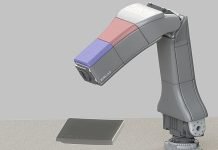
Sometimes individual self-interest may conflict social benefit.
One of such situations is the Prisoner’s Dilemma, a hypothetical game set up that shows a situation where people won’t want to work together even when it’s beneficial to do so.
For example, Mr. White and Mr. Black have been arrested by policemen for some minor crime.
The police think the two people have committed some more serious crime, but they don’t have evidence to prove that.
To get the criminals’ confession, the police put the two men in two separated rooms so that they cannot talk.
Then the police give each person several choices: if the criminal admits the partner’s crime, he can go free, but the partner will spend 5 five years in prison;
if the criminal keeps silent but the partner reports that he is the one who really did it, the partner will go free and the criminal will stay in jail for 5 years;
if they both keep silent and because the police have no evidence about their serious crime, they both will only stay in jail for 1 year for their minor crime;
finally, if they both report each other’s crime, then they both will stay in prison for 3 years.
In this situation, each partner has two choices: staying silent (i.e. cooperation) or reporting the partner’s crime (i.e. defection).
The best choice for the group is that they both keep silent (i.e. 2 years in prison in total).
However, the best choice for each person is that he should report the partner’s crime, because he will then be free or only stay in jail for 3 years.
In most social dilemma settings, people need to make decisions repeatedly. Thus, it is not a one-shot game, and a more sophisticated model of human interaction is important.
The model will be helpful to explain the fact that although humans often cooperate, the cooperation levels vary depending on the specific situation.
In a study published in PLoS ONE, scientists developed a model to interpret dynamic cooperation behaviors across different game designs and then examined how design variables influence cooperation.
They created standardized measures of the game and individual behavior across these games and used machine-learning techniques to calibrate and evaluate computational models.
The result showed that their model was successful in predicting individual decisions, average cooperation levels, and cooperation dynamics.
Moreover, they demonstrated that this synthetic model could predict the findings of the human participant experiments.
Copyright © 2018 Knowridge Science Report. All rights reserved.




